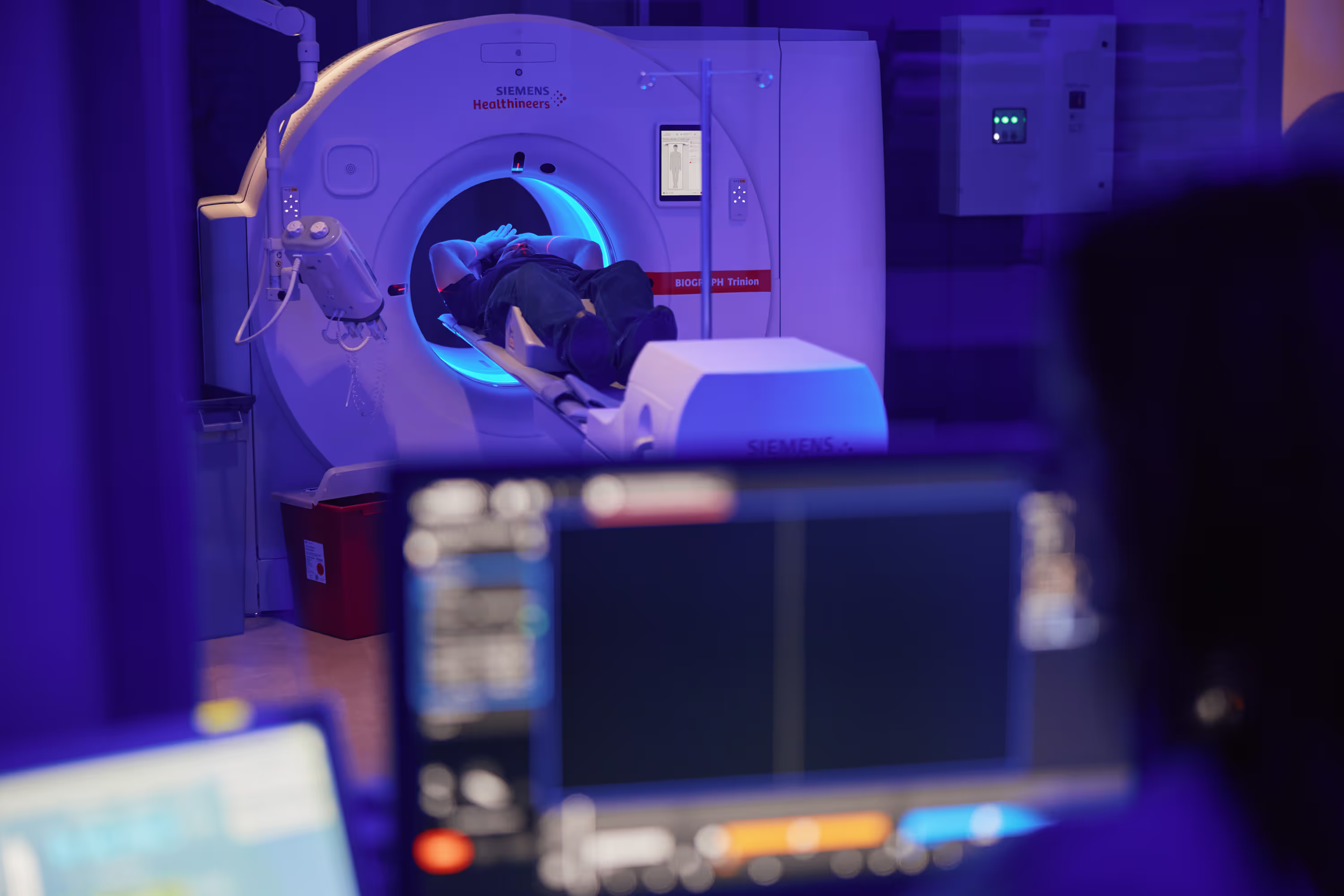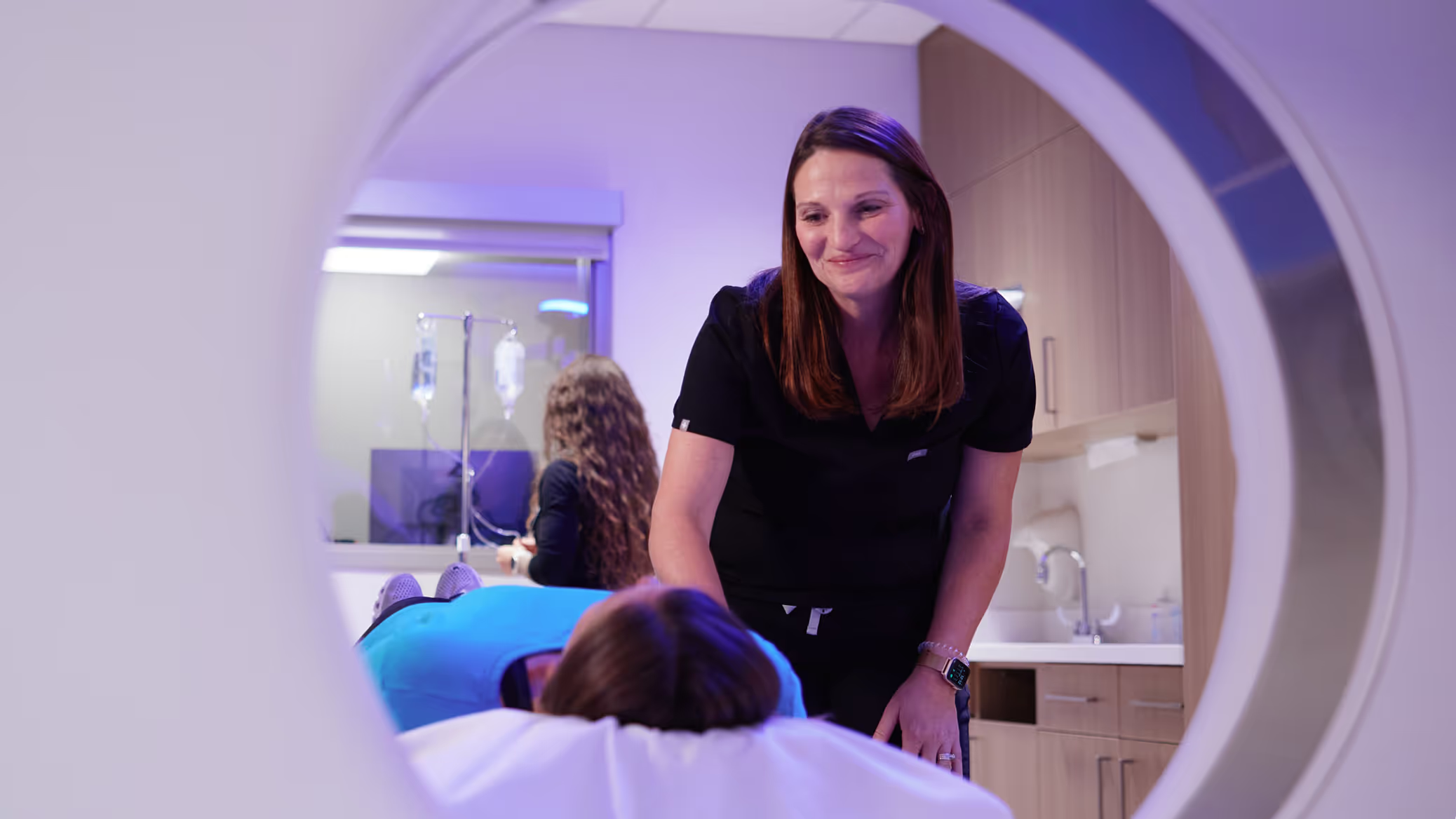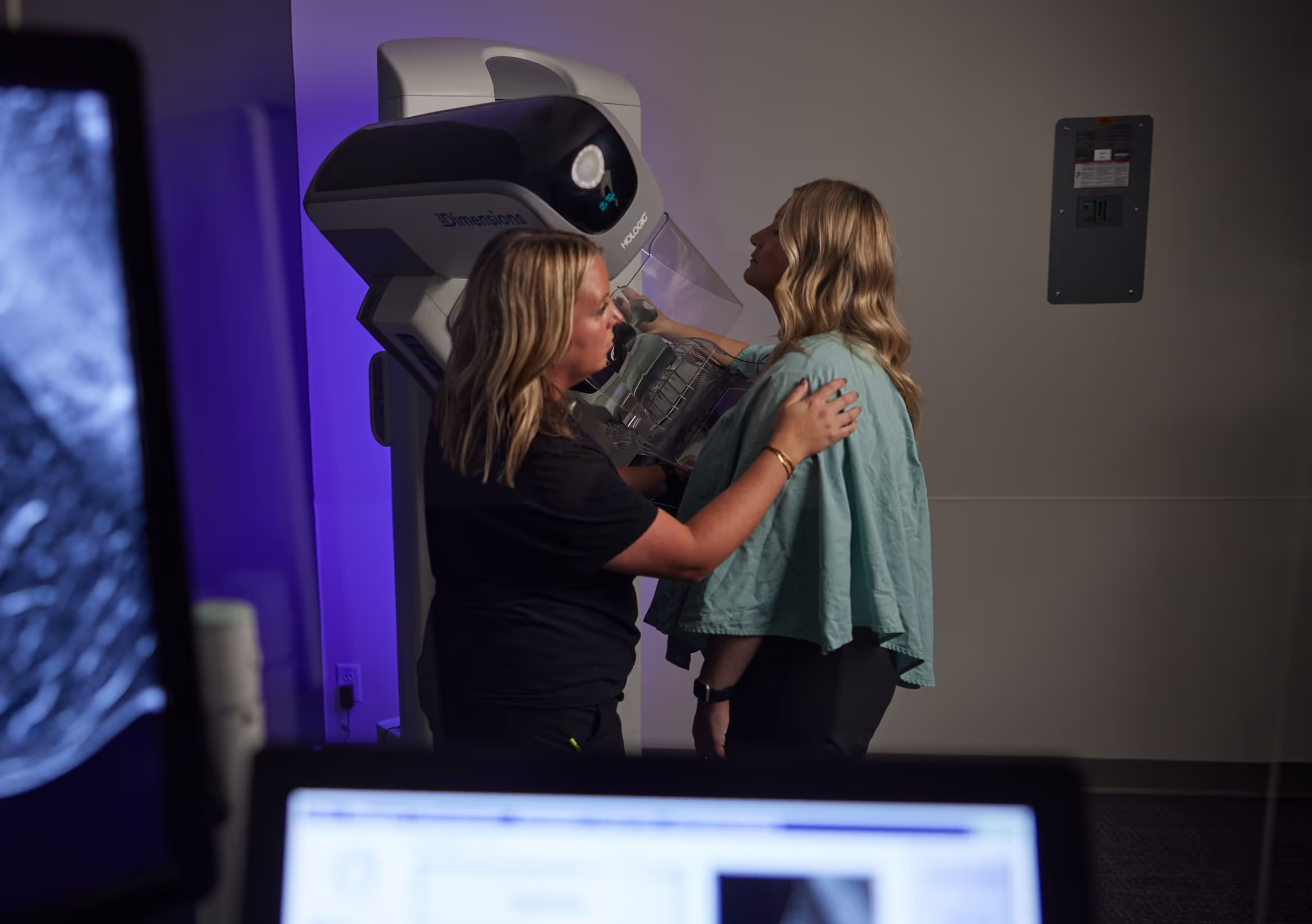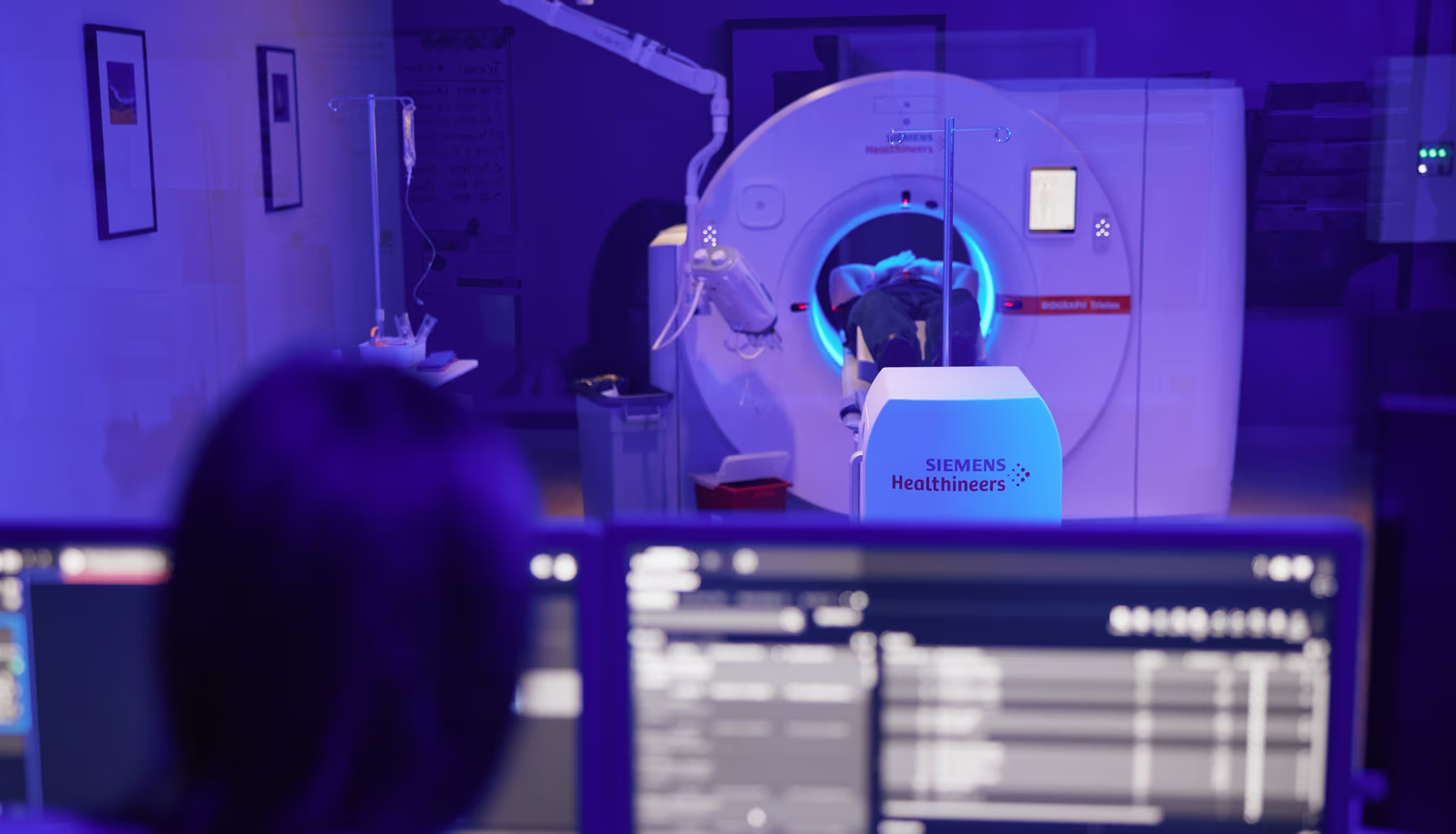Diagnostic Imaging
PET/CT Scan

What is a PET Scan?
PET stands for positron emission tomography. This is a sophisticated medical imaging test that detects changes at the cellular level. As a result, it can often reveal conditions that don’t appear on other tests like CT and MRI. The PET scan process uses a radioactive, glucose (sugar)-based tracer that’s delivered through a vein in the arm or hand. Before the scan, the tracer circulates throughout the body for approximately 60 minutes. The PET scanner then identifies cells that absorb larger amounts of the tracer, which indicates a potential health problem. PET scans are combined with CT, producing 3-D images that can help doctors make more accurate diagnoses.

How are PET scans used?
PET scans are instrumental in identifying and monitoring a variety of health conditions, including cancer, heart disease, and neurological disorders. Below are some common uses of PET imaging:
- Neurological
- Diagnosing conditions of the brain such as dementia, epilepsy, Alzheimer’s, and Parkinson’s disease
- Locating surgical sites in the brain
- Oncological
- Cancer detection and staging
- Identifying lesions or masses
- Assessing effects of cancer treatment
- Monitoring for tumor recurrence
PET/CT scans are powerful tools for the early detection of many types of cancer, including those affecting the following:
- Brain
- Breast
- Cervix
- Esophagus
- Colon and rectum
- Head and neck
- Lungs
- Lymphatic system
- Ovaries
- Skin
How to Prepare for a PET Scan
If a PET scan is recommended, be sure to discuss any questions or concerns you have about the procedure with your doctor. Make sure your doctor is aware and your imaging provider is informed of any of the following conditions, if applicable:
- Pregnancy, possible pregnancy, or breastfeeding
- Claustrophobia or severe anxiety (particularly during imaging procedures)
- Diabetes
- History of severe allergic reaction
- Any recent illness or recent surgeries
Prior to the test, carefully review the specific preparation information your doctor or imaging center provides. Typical preparatory steps include the following:
Avoid eating or drinking anything other than water for at least six hours (if not diabetic) or four hours (if diabetic) before the test.
- Avoid strenuous exercise for at least 24 hours prior to the exam.
- If you’re diabetic, avoid taking insulin for at least 4 hours prior to the exam.
- Wear comfortable clothing.
- Leave jewelry at home, and avoid wearing clothing or other items that contain metal (such as zippers or other fasteners, glasses, dentures, hairpins, etc.)
What to Expect During a PET/CT Scan?
You will be taken back to an uptake room, where the technologist will ask you some questions, go over your history, start your IV, and then inject you with the radioactive tracer. That tracer will circulate for 60 minutes, during which you’ll remain in that uptake room. The lights will be turned down, and you will not be able to use your phone. You will just rest during that time.
Once that 60-minute timeframe is up, you will be escorted into the scan room. You will lie down on the table, which will move in and out of the scanner for the CT and then slowly into the scanner for the PET portion. The scan time is usually between 10 and 30 minutes. The scanner does not make any noise other than a “white noise.”
Once your scan is complete, your IV will be removed, and you’ll be free to go. You will be able to return to your normal activities immediately following your appointment. Be sure to drink plenty of fluids, as this will help to quickly eliminate the tracer from your body.
Getting Your Results
A radiologist will interpret the results of your exam and, if applicable, compare them to the results of other tests you’ve recently undergone. The radiologist will then report their findings to your primary care provider.
Downloadable Resources
FAQ's
Where we offer
PET/CT Scan

3625 N Ankeny Blvd. Suite H Ankeny, IA 50023
Mon – Fri: 8am-5pm
Sat: Hours available for MRI and Digital Mammography
Fax: (515) 963-7619

12368 Stratford Drive Suite 300 Clive, IA 50325
Mon – Fri: 6:30am–5pm
Sat: Hours available for MRI & Digital Mammography
Fax: (515) 226-8408
Sarah Agan, R.T. (R) (M)
Phone: 515-226-9810
Fax: 515-226-8408
Email: sagan@iowarad.com

1221 Pleasant Street Suite 350 Des Moines, IA 50309
Mon – Fri: 8am-5pm
Fax: (515) 226-7493

2515 Grand Prairie Parkway, Waukee, IA 50263
Mon – Fri: 8am-5pm
Fax: (515) 226-8408
Schedule Today
At Iowa Radiology, we strive for excellence in everything we do. You can expect easy access, convenient scheduling, and timely service.
Featured Articles
Practicing Physicians
Schedule an Appointment
At Iowa Radiology, we strive for excellence in everything we do. You can expect easy access, convenient scheduling, and timely service.





































